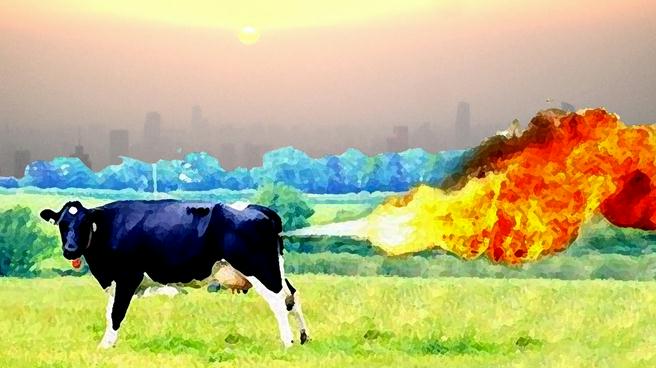 [ Other “energy alternatives” in the Far Out category of menu item Energy include escaping to Mars, liposuction fat, whirlwinds, playground power, garbage, tornadoes, and turning seawater into fuel.
[ Other “energy alternatives” in the Far Out category of menu item Energy include escaping to Mars, liposuction fat, whirlwinds, playground power, garbage, tornadoes, and turning seawater into fuel.
Alice Friedemann www.energyskeptic.com author of “When Trucks Stop Running: Energy and the Future of Transportation”, 2015, Springer and “Crunch! Whole Grain Artisan Chips and Crackers”. Podcasts: Derrick Jensen, Practical Prepping, KunstlerCast 253, KunstlerCast278, Peak Prosperity , XX2 report ]
Alexander, K. September 29, 2016. Climate fight targeting cows may reshape California dairies. San Francisco Chronicle.
Legislation signed this month by Gov. Jerry Brown requires California’s dairy industry to answer for its contribution to global warming by making a 40% cut in methane emissions in coming years. The gas, which heats the atmosphere 20 times faster than carbon dioxide, comes from the butts and burps of bovines.
One U.N. report blames livestock for 14.5% of the planet’s heat-trapping gases, as much as planes, trains and automobiles combined. So far livestock have escaped climate regulations.
The challenge of cutting methane could reshape the 1,500 dairy farms that dot California — only about a dozen of which own methane digesters. Farmers say the new law, and the money and equipment needed to comply with it, could deal some in the industry a fatal blow as they already struggle with low milk prices, rising labor costs and drought.
Adding to the pressure, many environmentalists are pushing to tighten the crackdown on methane. The legislation, they say, didn’t demand deep enough cuts — and could lead to unforeseen problems like pollution from methane digesters, which work by isolating cow manure in airtight chambers where the waste breaks down and releases methane gas for power or fuel, cost several hundred thousand dollars and require considerable upkeep. Many of the digesters in California have stopped working.
A more proven way to limit emissions is to get dairy cows out of their crowded stalls and into the pasture. This allows the manure to decompose naturally and spew less methane into the atmosphere. The practice, though, is criticized as time-consuming and land-intensive.
The digester at Giacomini’s ranch, which is smaller than some that are used on larger dairy farms in the Central Valley, was recently retrofitted with a new engine so that it runs more cleanly and efficiently. He paid about $100,000 for the upgrade on top of the $600,000 outlay for the system. Grants helped him cover nearly two-thirds of the initial cost, and Giacomini says he couldn’t have afforded the equipment without them.
The digester runs 24 hours a day. It collects runoff from cow stalls in a 2-acre drainage basin, where methane from manure is captured under a huge tarp and piped to a generator. About 70 kilowatts of electricity are produced, enough to power all the facilities on the ranch except the administrative building. In the evening there’s surplus power to sell back to the grid.

5 Responses to Energy from cow flatulence